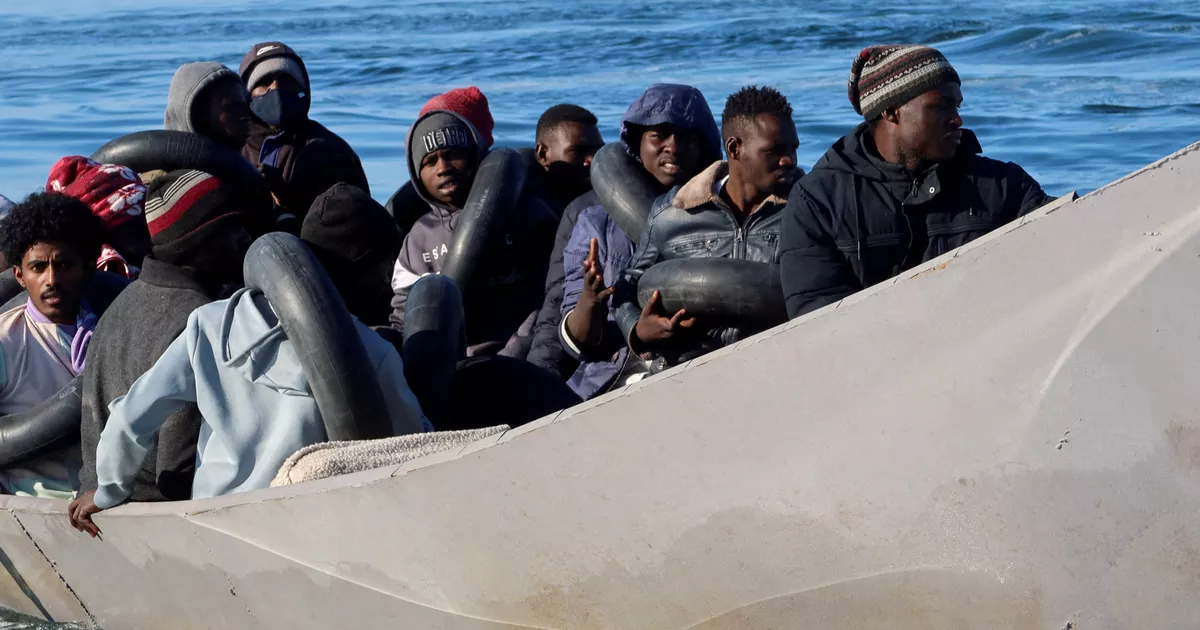A devastating incident has unfolded off the coast of Tunisia, where a migrant ship carrying 57 people sank, resulting in the recovery of four bodies and leaving 51 individuals still unaccounted for. The heart-wrenching news sheds light on the risks undertaken by irregular migrants and asylum seekers, who embark on perilous journeys in search of better lives.
Tunisia has emerged as a significant gateway for those seeking to migrate from various parts of the continent, often via treacherous voyages. Survivors of this recent tragedy recounted that the makeshift boat had departed from a beach near the coastal city of Sfax over the weekend.
As of Monday afternoon, Faouzi Masmoudi, spokesperson for the court in Sfax, confirmed, “Four bodies have been recovered, two migrants have been rescued and 51 are reported missing.” The coastguard is actively conducting search and rescue operations in hopes of finding more survivors.
The distance between Sfax and Italy’s Lampedusa island is a mere 130 kilometers (80 miles), highlighting the dangerous proximity of these regions.
Tragedy has also struck off Italy’s Lampedusa island, with two separate sinkings resulting in the disappearance of at least 30 migrants who had embarked on boats departing from Sfax the previous week.
Authorities in Tunisia have been grappling with grim discoveries, as the bodies of 12 migrants were found washed ashore north of Sfax between Friday and Sunday. Nonetheless, it is uncertain whether these incidents are connected to the shipwreck in the vicinity of the Kerkennah Islands, situated directly opposite Sfax.
Masmoudi emphasized that authorities are diligently investigating the possibility of additional shipwrecks in the same area.
Tunisia’s interior ministry reported that as of July 20 this year, 901 bodies had been recovered due to maritime accidents in the Mediterranean, while 34,290 migrants had been either rescued or intercepted. The majority of these migrants hailed from sub-Saharan African nations.
Italy has seen an influx of nearly 90,000 migrants this year, with many embarking on their journeys from Tunisia and neighboring Libya, according to the UN refugee agency UNHCR.
The central Mediterranean route has earned notoriety as the world’s deadliest migrant crossing, accounting for over 20,000 fatalities since 2014, as reported by the International Organization for Migration.
The surge in migrant crossing attempts in recent months follows incendiary remarks by President Kais Saied, who alleged that sub-Saharan migrants were contributing to crime and posing a demographic threat to Tunisia. These remarks have fueled xenophobic attacks against black African migrants and students, leading to job losses and housing instability.
In a grim turn of events, hundreds of migrants were displaced from Sfax following a confrontation with a Tunisian man that led to his death. Subsequently, Tunisian authorities reportedly transported migrants to desolate areas near the Libyan and Algerian borders. Humanitarian sources have estimated their number to exceed 2,000, with at least 25 reported migrant deaths in the Tunisian-Libyan border region since the previous month.




